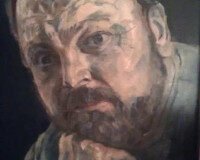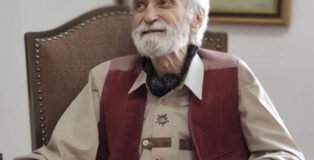[:ro]Țopescu Mihai[:en]Țopescu Mihai[:]
[:ro]
web: ,
Prezentare Demers Artistic
Mihai Ţopescu trăieşte şi lucrează la Târgu Jiu, nu departe de Coloana fără sfârşit a lui Constantin Brâncuşi. Marcat spiritual de marele înaintaş, artistul gorjean contemporan mărturiseşte: „Nu pot să fiu decât fericit că Brâncuşi nu a descoperit sticla ca mijloc de expresie.”
Creaţia lui Mihai Ţopescu, desfăşurată pe o durată de trei decenii, are ca miez fizic sticla. Sticlei i se adaugă adesea alte materiale (cu precădere, lemnul şi metalul), alcătuind împreună lucrări de sculptură care, grupate, structurează spaţiul sub înfăţişarea unor instalaţii ce pot integra „limbaje” actuale, de pildă, secvenţe video.
Sticlei îi pune în valoare capacitatea de a seduce, de a fascina optic şi de a sugera misterul, fără insă a miza pe fragilitatea materialului. Mihai Ţopescu, neobosit în inventivitatea-i tehnică şi formală, a făcut din această „artă a focului” un soi de expanded field, în care elementele sculpturale dialoghează cu trăsăturile
picturii şi graficii – de exemplu, seria a cărei „naştere” a fost înregistrată etapizat in filmul Anatomy of Glass (2010) ori suita Personaje captive/Desene în sticlă (2012).
Mihai Ţopescu are o remarcabilă vizibilitate internaţională, fiind integrat în circuitul marilor manifestări expoziţionale şi competiţionale dedicate sticlei. Este totodată un nume de prestigiu activ în Romania, opera lui fiind prezentă în cele mai importante evenimente publice colective rezervate sticlei, artelor decorative in general. Este apreciat şi solicitat pentru activitatea de glass designer atât în ţară, cât şi peste hotare. Creaţia lui artistică este rezultatul unei gândiri plastice care face din sticlă un material prezent, cu drepturi depline, in teritoriul major al sculpturii. Opera lui Mihai Ţopescu este definită de întâlnirea fericită, rodnică, a „creativităţii” cu respectul pentru „meşteşug”. Nuanţele dramatice în reprezentare nu le exclud pe cele ironice, orizontului profan de inspiraţie adaugându-i-se cel sacru. Lucrările, bogate şi complexe, aparţin unui artist consacrat, nicidecum prizonierului unor tipare conceptuale ori stilistice, lucru ce ne face să aşteptăm cu interes etapele următoare ale creaţiei sale.
Dr. Adrian Guţă
Critic de arta
website link: ,
[:en]
web: ,
Prezentare Demers Artistic
Mihai Ţopescu lives and works at Târgu Jiu (Gorj County, Romania), not far from Constantin Brâncuşi’s Endless Column. Spiritually determined by the great forerunner, the contemporary Gorjean artist confesses: “I am really happy that Brâncuşi has not discovered the art of the glass as a mean of expression.”
Ţopescu’s creation, carried on along three decades, has glass as its physical core. Other materials (mainly wood and metal) often participate in his compositions, making up sculptural works which, composed together, it structures the space into installations able to integrate contemporary artistic languages– for instance, video.
The artist highlights glass’ capacity to seduce, to fascinate optically and to suggest mystery, without ever relying on the fragility of this material. Inexhaustible technically speaking Mihai Ţopescu has made from this “art of the fire” a kind of interdisciplinary field, where the sculptural elements uses features proper to painting and graphics – see, for example, the series whose “birth” was recorded stage by stage in the film Anatomy of Glass (2010), or the suite Captive Characters/Drawings in Glass (2012).
Ţopescu has a remarkable international visibility: he is integrated in the circuit of the great exhibitions and manifestations dedicated to glass. At the same time he is an active and respected name in the “arts of the fire”, his oeuvre being displayed in the most important collective public events dedicated to glass, organized in Romania. He is appreciated and requested as a glass designer both at home and abroad.
His artistic production is the outcome of a plastic thinking which turns glass into a material used in the major territory of sculpture. Ţopescu’s work could be defined as a happy and fruitful encounter of creativity and craft. In representation, the dramatic nuances do not exclude the ironical ones, the laic sources of inspiration interlaces with sacred ones. The works, rich and complex, belong to an acknowledged artist and not in the least to the prisoner of some
conceptual or stylistic patterns, a fact which makes us expect with interest the next stages of his creation.
Dr. Adrian Guţă
Art Critic
website link: ,
[:]














Comentarii recente